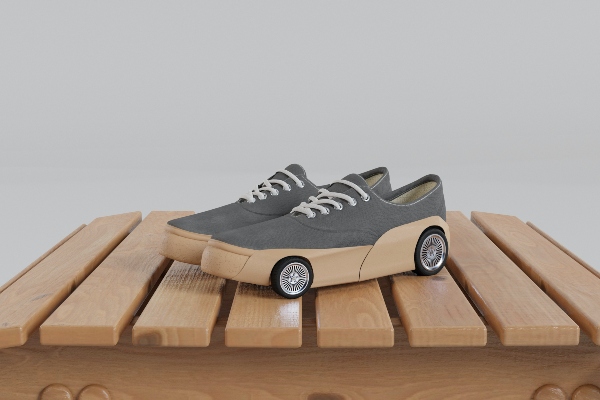Taking “roll” on roller-shoe injuries
By Annette M. Zaharoff, MD
You probably did a double take when you first saw a kid glide by you at the mall on roller shoes! Roller shoes are the latest craze. Apparently it is all fun and games until someone fractures a distal radius or dislocates an elbow.
Such is the case with the increasingly popular Heelys and Street Gliders. These products combine regular shoes with wheels to create roller shoes. Medical studies on injuries related to the products have begun trickling in, as they did in the past for other relatively new sports like in-line skating.
Upper limb injuries were the predominant injury to roller shoe users, according to a study published in the journal Pediatrics in June on injuries seen in the orthopedic department at a University Hospital in Dublin, Ireland. The majority of youths treated for injuries related to roller shoe use in the study were girls (83 percent). Seventy percent of the injured were new users who had used the products five times or less; of these, 34 percent were first-time users. Eighteen percent were advanced users who had attempted jumps or directional changes.
Seventy children were included in the study. The data for the study was collected during the 10- week summer vacation period in 2006. Seventy percent had been “heeling,” and the remainder had been “street gliding.” Street gliders are made in the U.K. and are wheels that users strap to their regular athletic shoes. Gliders are similar to a streamlined version of old-fashioned roller skates, but with only one pair of wheels, set at the heel. An Allen wrench replaces the old skate key. Heelys are manufactured in Carrollton, Texas, and are athletic shoes with a wheel embedded in the heel. By shifting their body weight, wearers can switch from walking to gliding.
The most common injury sustained, as reported in the Pediatrics article, was a fracture to the distal radius (forearm bone). Other upper limb injuries included fractures to the elbow, dislocation of the elbow joint, and hand/wrist fractures. The lower limb injuries reported included ankle/foot injuries, leg fractures, and one knee injury. There were no head or life-threatening injuries reported. The injuries did not appear to dampen the spirit of the users, as 54 percent of the participants said they would use the shoes again, although their parents, for the most part, disagreed.
The Pediatrics study reported that none of the injured children was wearing any protective gear when he or she was hurt, and only 12 percent were familiar with the instructions provided by the manufacturers of the products they were using.
Results of a study released by Heelys in April used U.S. Consumer Product Safety Commission data that had found that the shoes, when considered in the context of a wheeled sport, are safer than bike riding and skateboarding, as well as sports like basketball, baseball and soccer. The manufacturer reports that safety instructions are provided in the packaging and on their Web site.
The American Academy of Orthopedic Surgeons issued a commonsense opinion regarding the use of roller shoes in June. Those wearing roller shoes should use protective gear, including helmet, wrist protectors and knee and elbow pads, and not heel on crowded walkways or in traffic. Similar instructions are provided on the Heelys’ Web site.
So when junior whizzes by on his/her Street Gliders or Heelys, watch out! If an injury does occur, see your sports medicine physician to assess the injury and recommend treatment.
Dr. Annette Zaharoff is a sports medicine physician specializing in the non surgical evaluation and treatment of injuries. She maintains a private practice in San Antonio and may be reached by calling her office at (210) 616-0646, or by visiting her Web site www.drZmd.com.






